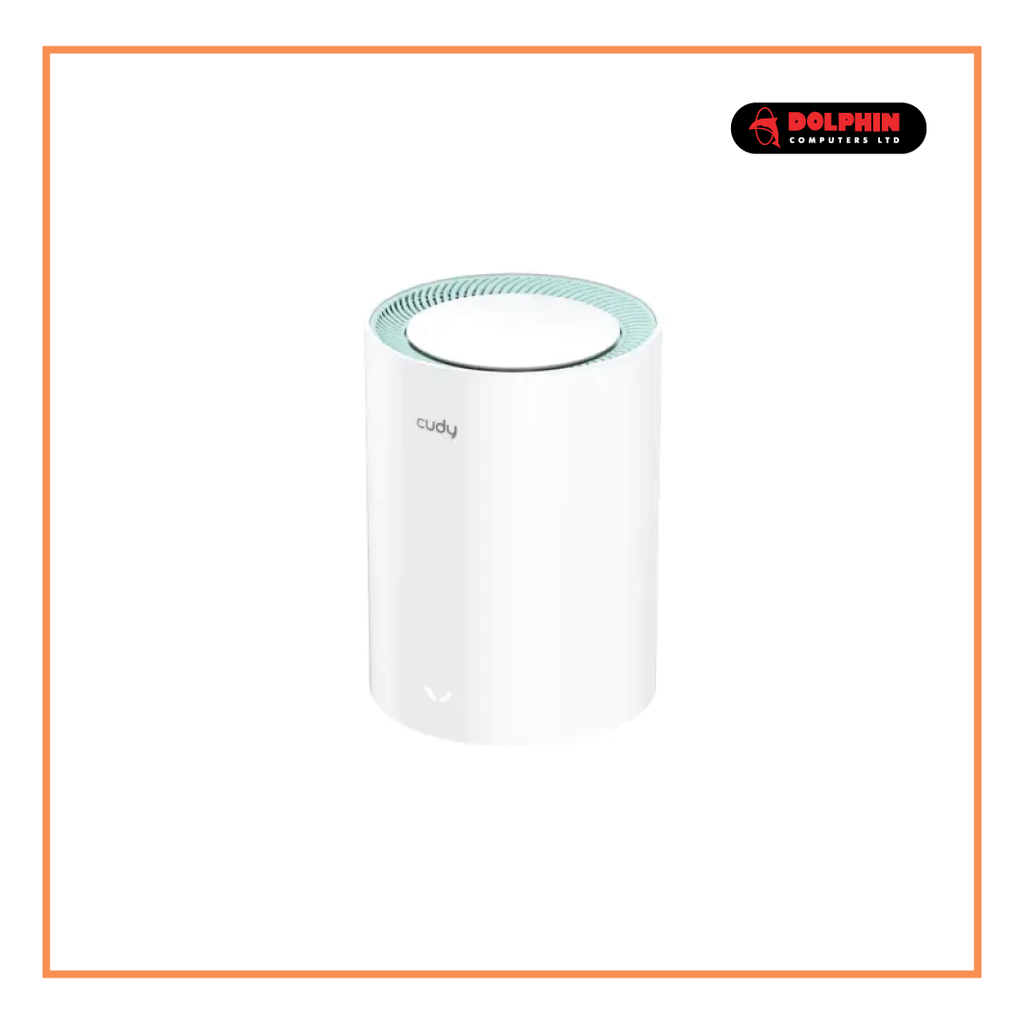Cudy M1300 AC1200 1200mbps Gigabit Whole Home Mesh WiFi Router (1 Pack)
Key Features
Model: M1300
867Mbps on 5GHz and 300Mbps on 2.4GHz
1 × 1000/100/10 Mbps WAN Port
1 × 1000/100/10 Mbps LAN Port
Coverage: Up to 1600 square feet
Specification
| Key Features | |
| Data Rate | 867Mbps (5GHz), 300Mbps (2.4GHz) Compatible with 802.11a/b/g/n/ac Wi-Fi standards |
| Antenna | 2 × Internal Omni-Directional Antennas |
| Button | Pair Button, Reset Button |
| Frequency | 5 GHz, 2.4 GHz |
| Wireless | Wireless Modes: Enable/Disable Wireless Radio, WMM |
| Interface | 1 × 1000/100/10 Mbps WAN Port 1 × 1000/100/10 Mbps LAN Port |
| Network Standard | IEEE 802.11/ac/n/a 5GHz IEEE 802.11/n/b/g 2.4GHz |
| Encryption | WEP, WPA/WPA2, WPA-PSK/WPA2-PSK |
| Others | Flash: 128Mbit (16MB) DDR: 1Gbit (128MB) |
| Operating System Support | Microsoft Windows 98SE/ NT/ 2000/ XP/ Vista/ 7/ 8/ 8.1/ 10, MAC OS, NetWare, UNIX or Linux |
| Power Source | |
| Power Mode | 12V/1A |
| Physical Dimension | |
| Color | White |
| Manufacturer warranty | |
| Warranty | 1 year |
Description
Cudy M1300 AC1200 1200mbps Gigabit Whole Home Mesh WiFi Router (1 Pack)
The Cudy M1300 AC1200 Whole Home Mesh WiFi Router features 16MB Flash and 128MB DDR3. It comes with 2 x Gigabit Ethernet Ports and it has 2x Internal Omni-Directional Antennas. It creates connections over greater distances, providing powerful penetration through walls. 2.4GHz provides an extremely long-range, 5GHz reaches 867Mbps, ideal for gaming and 4K streaming. Simple tasks like web browsing can be handled by the 2.4GHz band, while bandwidth-intensive tasks like online gaming or HD video streaming can be processed by the 5GHz band at the same time. It is a 2-IN-1 WiFi Router / Access Point. When working in router mode, it can quickly establish a connection with the Internet through dial-up, so that all devices connected to it can enjoy high-speed networks. When working in the access point mode, usually a modem or router is required in front of it to dial and play the role of DHCP server, it only undertakes the role of data forwarding. The Cudy M1300 Router comes with built-in PPTP / L2TP VPN Clients, this router can easily establish a connection to VPN Server to transport all your online data and traffic, securing it with its encryption at the same time. You can use this function to connect your home network with your work network or school network. You can bind your home IP address to a custom domain name through the DDNS function. No matter how the IP changes, the domain name can point to your network, which makes remote management possible.



